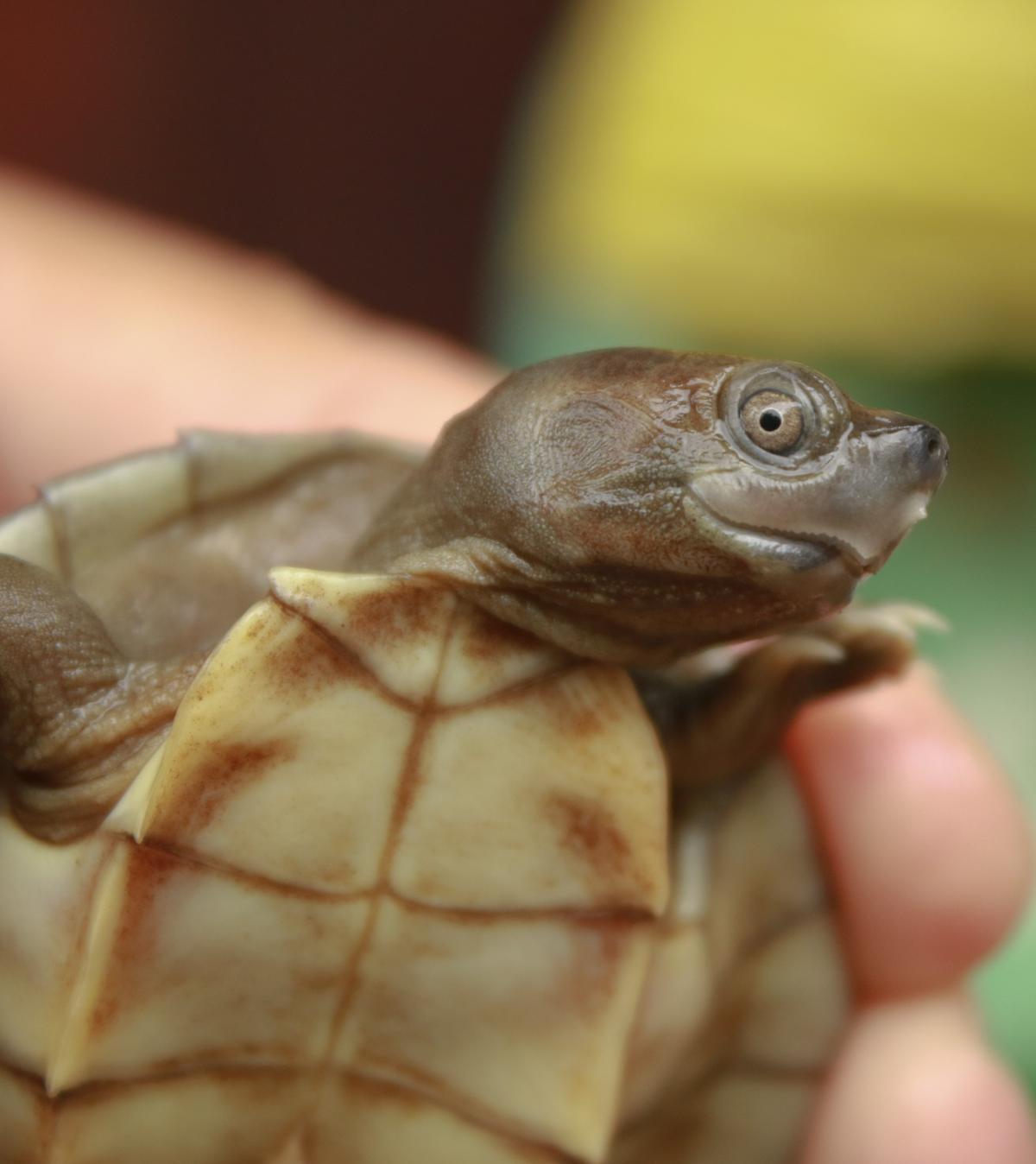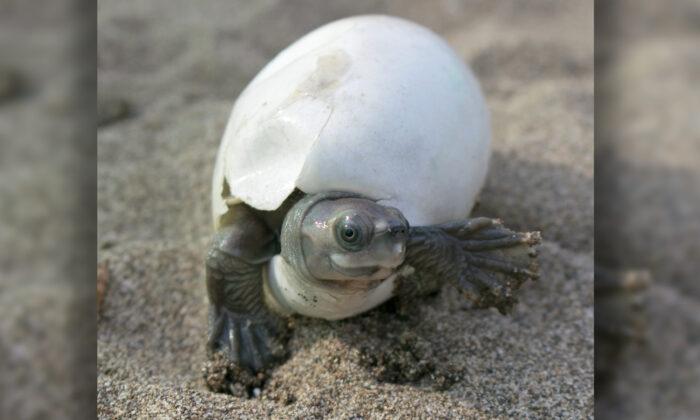A rare turtle species, beloved for its permanent “smiling” expression, has been saved from the brink of extinction by a team of ambitious conservationists.
The Burmese roofed turtle was being considered for reclassification as “extinct” in the year 2000 after scientists, having gained legal entry to Myanmar, were unable to locate any wild specimens. But a two-decade-long breeding program has resulted in a replenished population of 1,000 turtles, and counting.
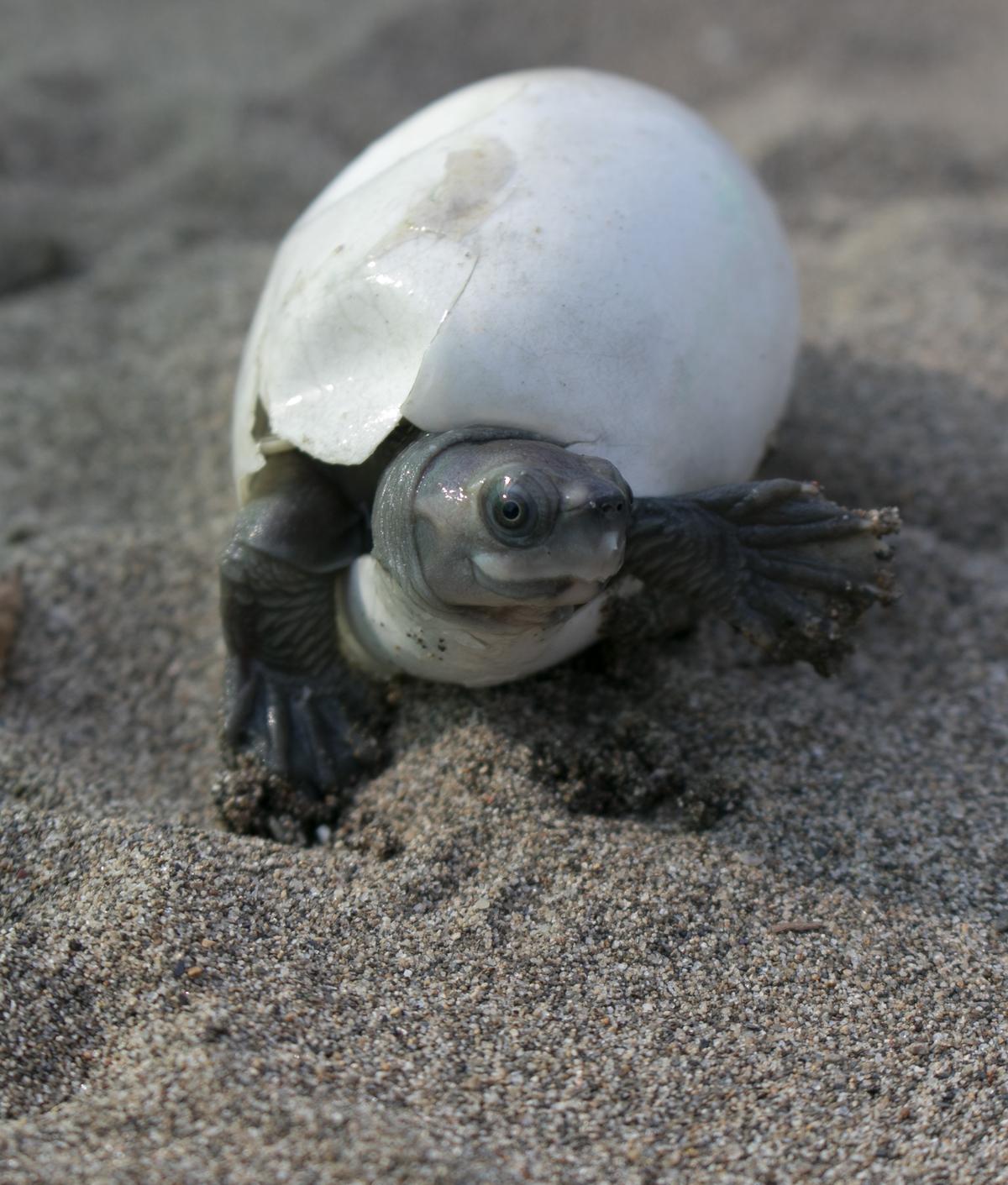
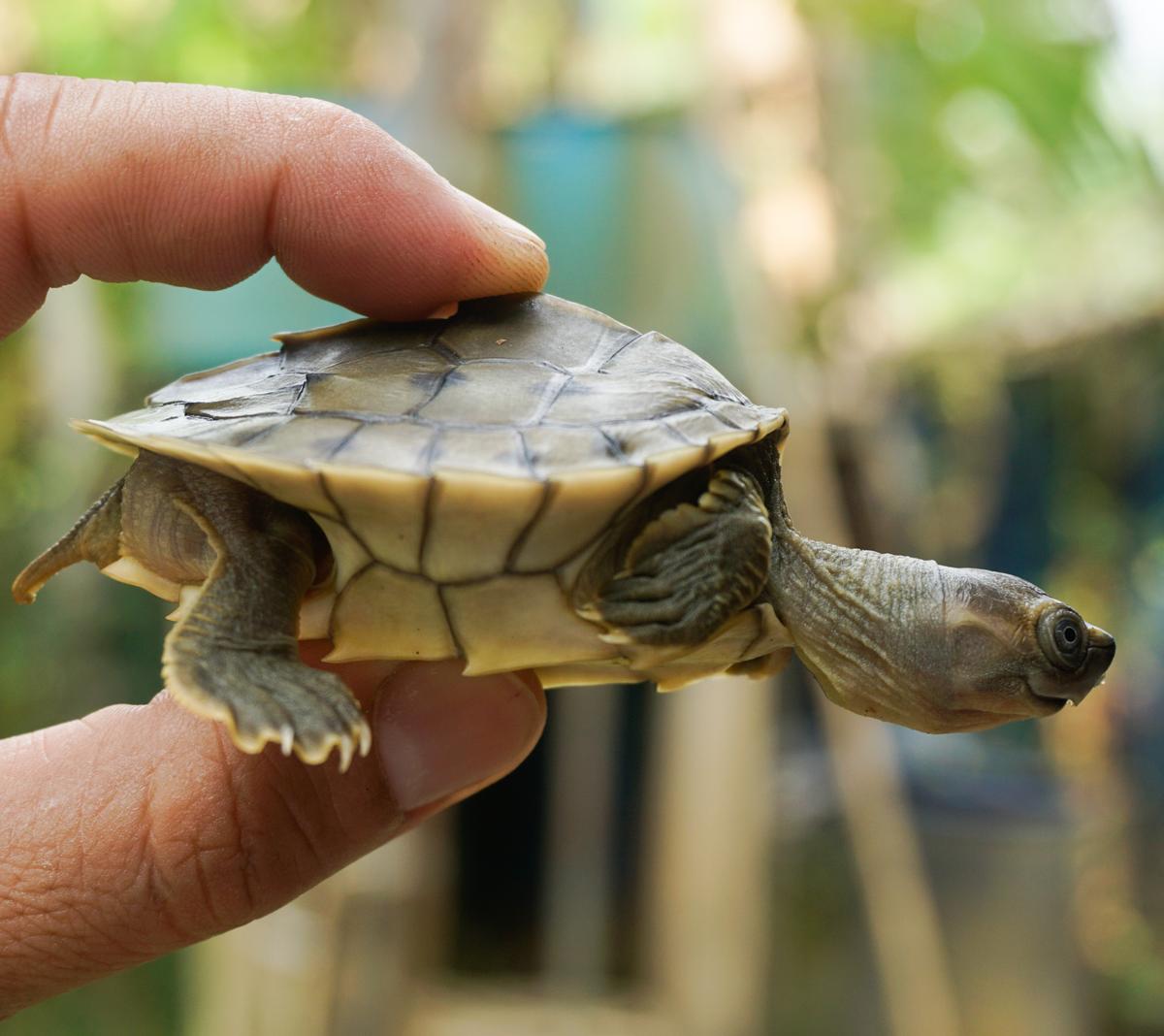
An adult Burmese roofed turtle—Batagur trivittata—is considered a giant turtle, growing up to 2 feet in length. Females grow larger than their male counterparts.
The turtle’s native habitat are the river systems of Myanmar, but a living specimen found its way into the collection of an American turtle enthusiast in the early 2000s after being sold at a pet shop in Hong Kong. “[I]t raised a lot of eyebrows,” said Rick Hudson, president of the Turtle Survival Alliance (TSA). Conservationists, he said, suspected local dealers were smuggling animals out of Myanmar.
Biologist Gerald Kuchling of the University of Western Australia was also alerted to the existence of this dwindling species at around the same time, with a field sighting that took him by surprise. He organized an expedition of Myanmar’s upper Chindwin and Dokhtawady rivers to investigate further and was “flabbergasted” to discover a number of surviving specimens.
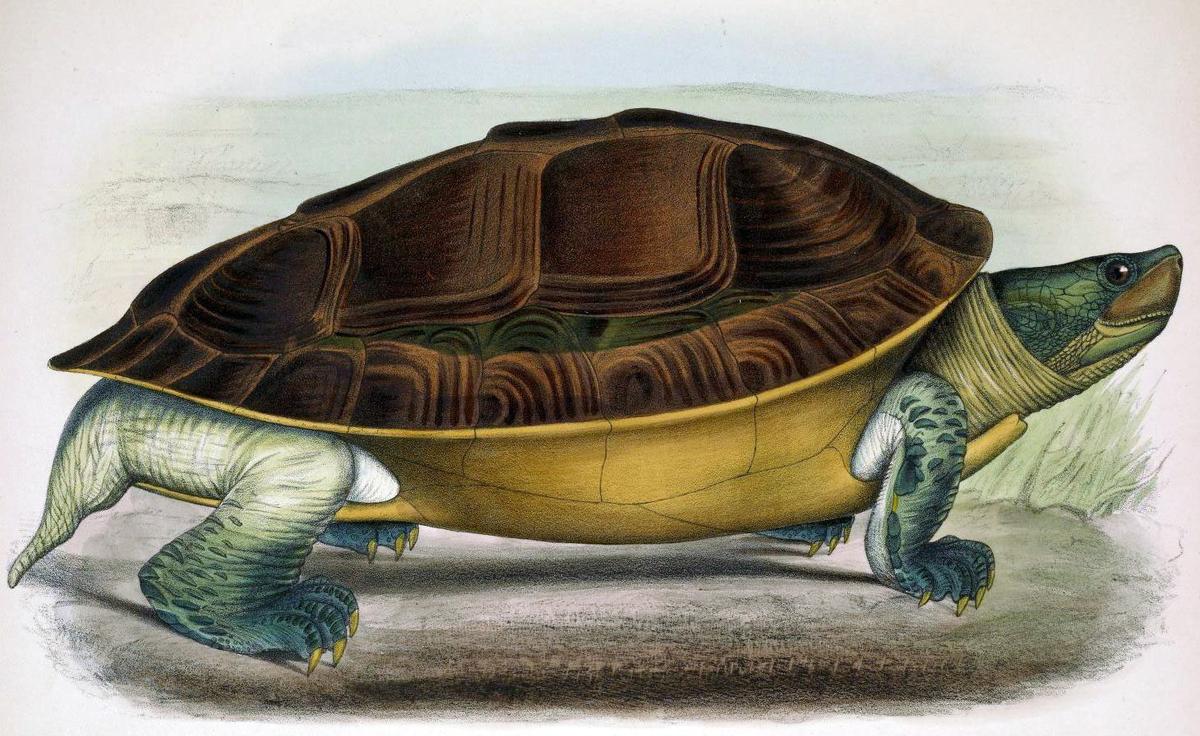
He had them transferred to the Mandalay Zoo in the nick of time, as a damming project decimated a portion of their natural habitat shortly thereafter. A breeding program was inaugurated.
As part of the breeding program, Kuchling set up a “conservation stewardship,” enlisting local Myanmarese villagers to watch and protect the riverbanks and wild nesting females. Most of the turtles enrolled in the breeding program were, and are, managed in captivity across three sites in Myanmar, and a small number have been successfully released into the wild since 2015.
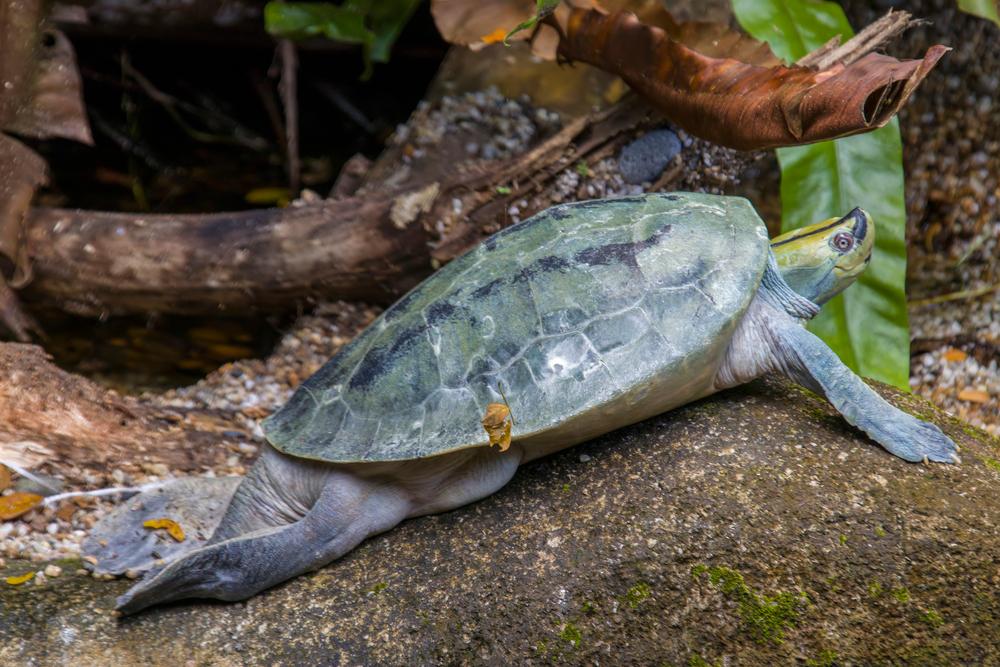
Most encouragingly, wild females are breeding again. The male Burmese roofed turtle even has a colorful trick up its sleeve during mating season: its head turns from green to yellow, with striking black markings, when the turtle is ready to find a partner.
